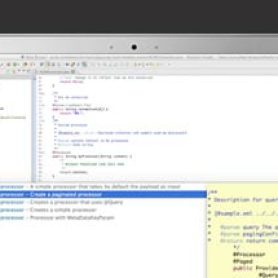Latest posts
Implementing a Circuit Breaker with DevKit
One of my favorite patterns from Michael Nygard's excellent Release It! is the Circuit Breaker. A circuit breaker is an automatic switch that stops the... read more.
Getting the most out of Mule Error Handling
Error handling in event driven systems like Mule can be a challenge to understand, if you have worked with Mule you'll know that there... read more.
Mule 3.2.1 Released
This is a quick note to let you know that we have released Mule 3.2.1 Community and Enterprise. This is a maintenance release focusing on... read more.
Upcoming Webinar: Red Bee Media brings video-on-demand using Mule
We provide a lot of webinars with tips and tricks from our development team on how Mule works across various industries. But what about... read more.
Total traceability with correlation IDs
Distributed systems are great: they're more versatile and resilient than monolithic ones. They also bring challenges of their own, one of them being the... read more.
Handling HTTP callbacks using the new Mule DevKit: a Twilio example
When you send a request to an API and it gets processed the API might want to notify you app about the status of... read more.
Mule Tip: Controlling Mule Soap Headers
You might have noticed that under certain circumstances Mule will add its own Soap Headers to the CXF calls. This can be a problem... read more.
Implementing Custom Validation with DevKit
Validating data can be easy with Mule if your message payloads are in certain formats. XML payloads, for instance, can be verified for correctness... read more.
Get real-time with the new SalesForce API
Before streaming APIs, if you wanted to know if there were any updates on a specific event you had to query the API periodically... read more.
Mule Tip: Including formatted SQL statements from external files in your application
When developing a Mule Application the normal way to define an SQL statement is by declaring it directly in the connector, as shown in... read more.






